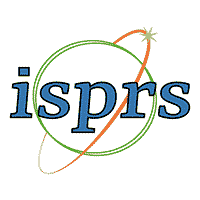Topic Menu
► Topic MenuTopic Editors




Urban Sensing Technologies
Topic Information
Dear Colleagues,
Urban sensing is the acquisition of information about the physical characteristics, human mobility, and socioeconomic activities in urban space using sensing technologies. Accurate and timely information from urban sensing is vital for understanding complex urban systems and achieving sustainable urban development. Traditionally, conventional sensing technologies that depend on ground-based, airborne and spaceborne sensors are employed to characterize the physical properties of land, air, water, vegetation, surface and underground structures and facilities in the urban environment. Characterization of human mobility and socioeconomic status, however, may necessitate sensing technologies that utilize alternative data sources and methodologies, such as for social sensing, crowdsourcing, mobile mapping, and Internet of Things. This topic aims to highlight recent advancements in urban sensing technologies and applications.
Dr. Jianming Liang
Prof. Dr. Giuseppe Borruso
Dr. Wei Huang
Prof. Dr. Ginevra Balletto
Topic Editors
Keywords
- urban sensing
- urban remote sensing
- urban informatics
- big data
- spatial trajectories
- mobile mapping
- Internet of Things
- social media mining
- crowdsourcing
- social sensing
Participating Journals
| Journal Name | Impact Factor | CiteScore | Launched Year | First Decision (median) | APC |
|---|---|---|---|---|---|

Geomatics
|
- | - | 2021 | 18.6 Days | CHF 1000 |

ISPRS International Journal of Geo-Information
|
3.4 | 6.2 | 2012 | 35.5 Days | CHF 1700 |

Smart Cities
|
6.4 | 8.5 | 2018 | 20.2 Days | CHF 2000 |

Sustainability
|
3.9 | 5.8 | 2009 | 18.8 Days | CHF 2400 |

Urban Science
|
2.0 | 4.5 | 2017 | 23.7 Days | CHF 1600 |

MDPI Topics is cooperating with Preprints.org and has built a direct connection between MDPI journals and Preprints.org. Authors are encouraged to enjoy the benefits by posting a preprint at Preprints.org prior to publication:
- Immediately share your ideas ahead of publication and establish your research priority;
- Protect your idea from being stolen with this time-stamped preprint article;
- Enhance the exposure and impact of your research;
- Receive feedback from your peers in advance;
- Have it indexed in Web of Science (Preprint Citation Index), Google Scholar, Crossref, SHARE, PrePubMed, Scilit and Europe PMC.

